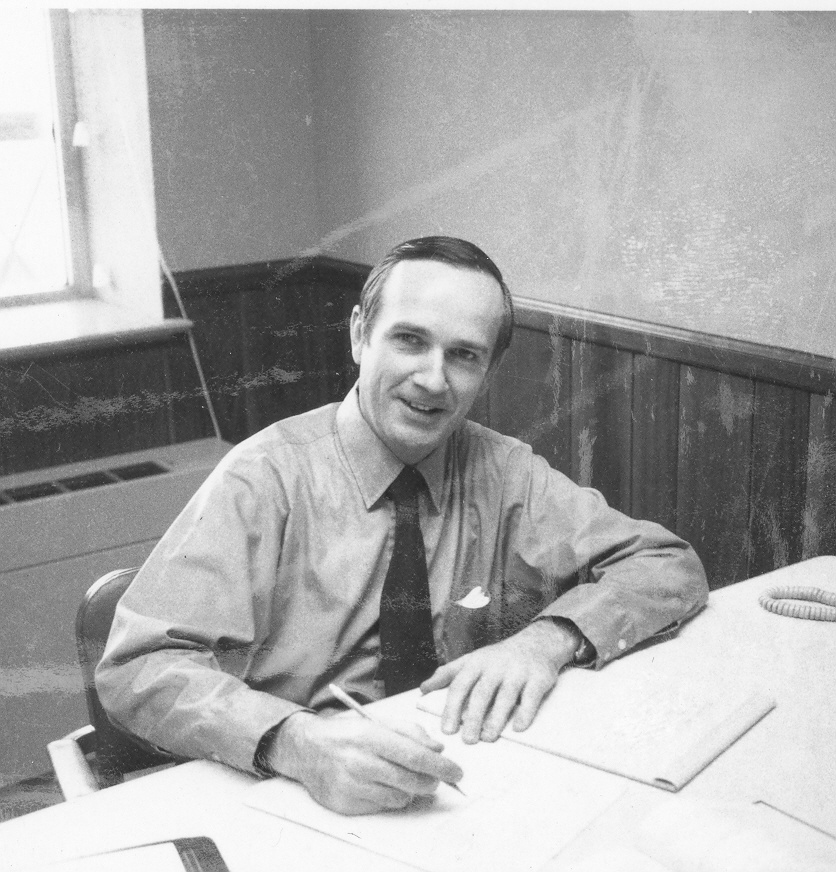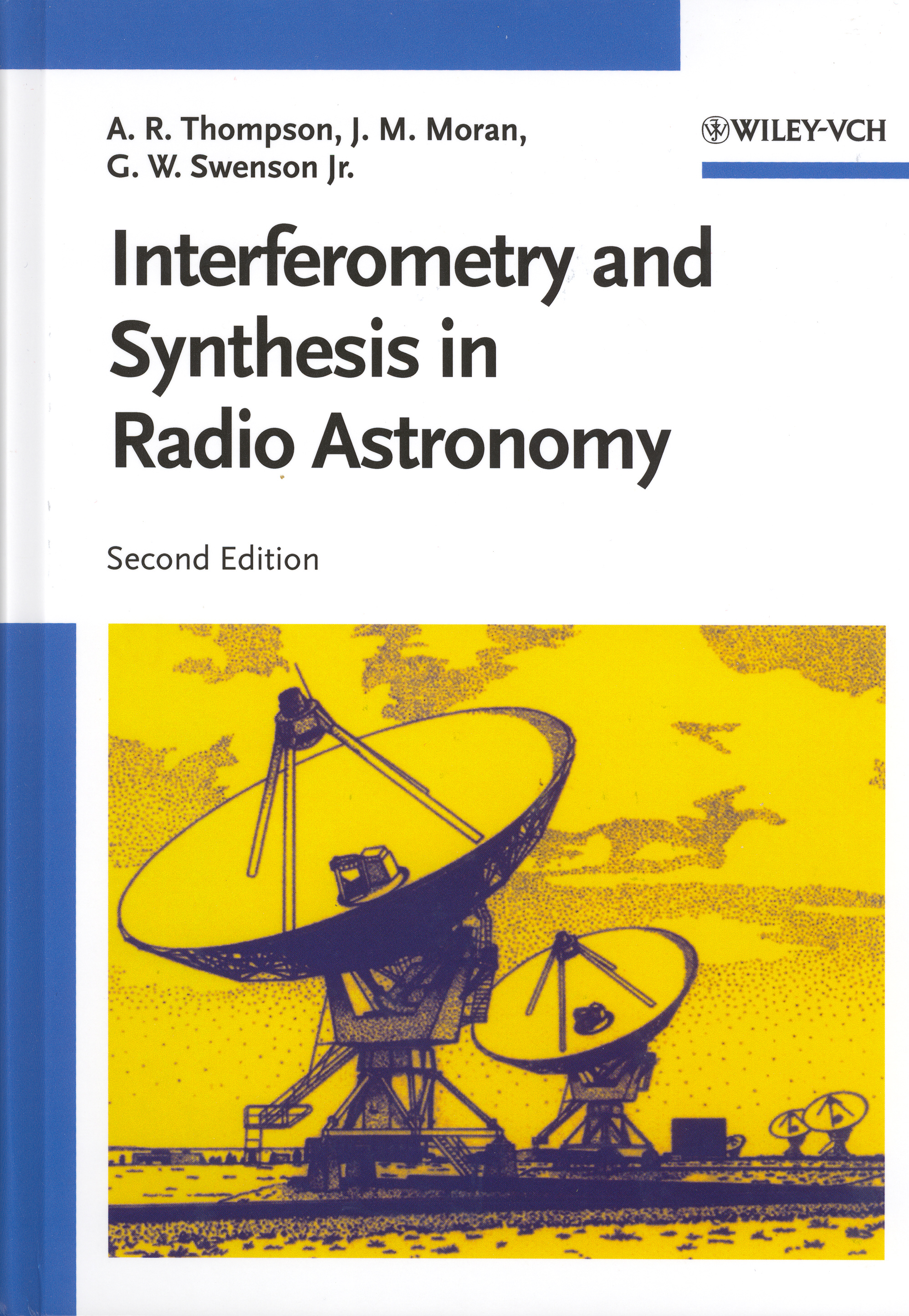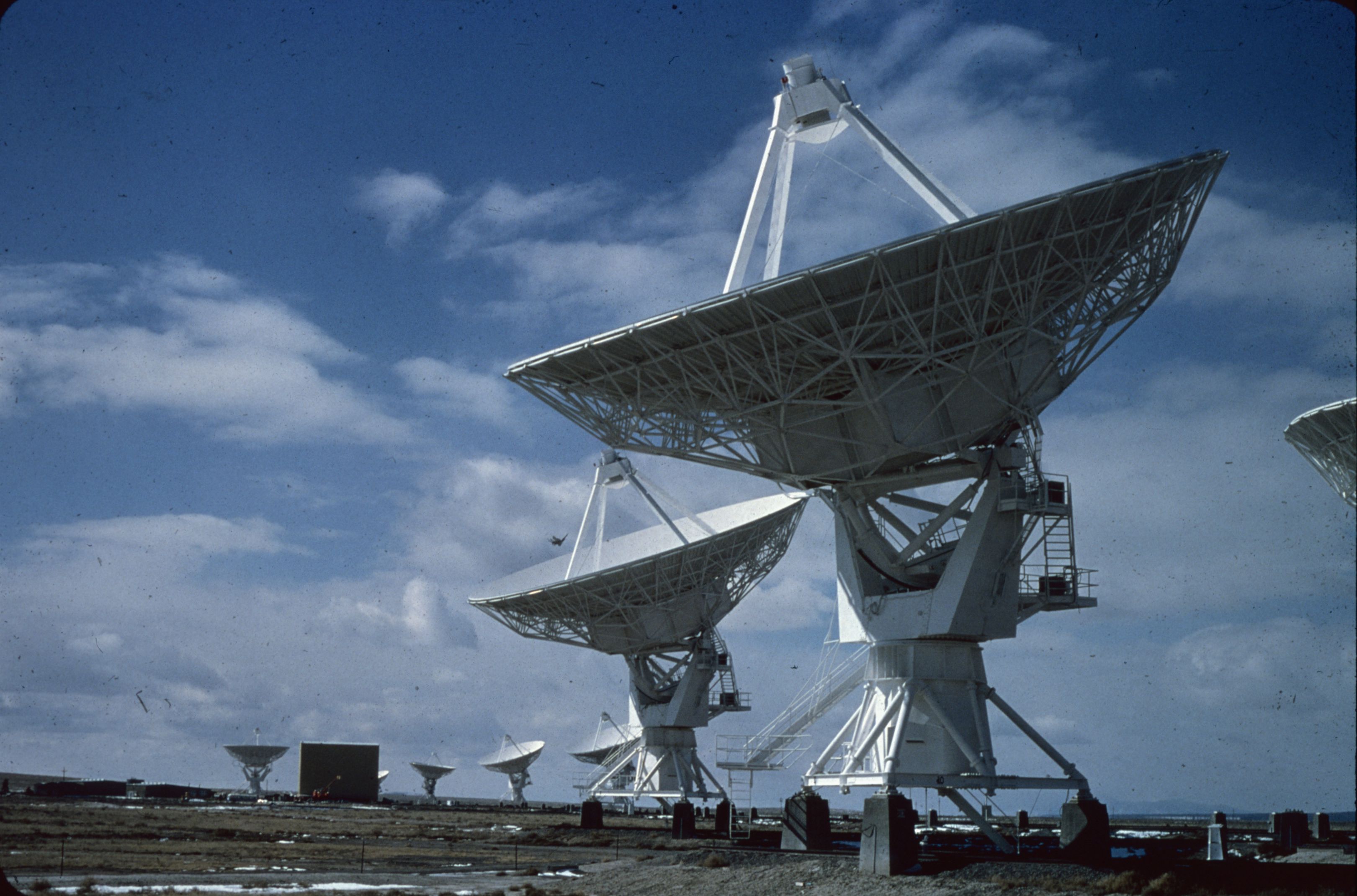Finding Aid to the Papers of A. Richard Thompson, 1963-2010
   |
See also the Papers of Woodruff T. Sullivan III, which include a 70 minute oral interview with Thompson conducted in 1978.
Location of collection: National Radio Astronomy Observatory, Archives, 520 Edgemont Rd., Charlottesville, VA. Phone: 1-434-296-0203, email: archivist at nrao.edu Title and dates of the collection: Papers of Anthony Richard Thompson, 1965-2010 Size of the collection: 8.0 linear feet Papers/records created by: Anthony Richard Thompson, 1931- Short description of collection: These papers document the work of A. Richard Thompson, beginning with his 1973 appointment at National Radio Astronomy Observatory, and including his work on both the Very Large Array (VLA) and Very Long Baseline Array (VLBA) during their construction, as well as his work with national and international groups concerned with radio frequency allocations and radio interference. Also included in the collection are manuscripts, notes, and correspondence related to the publication of the several editions of Interferometry and Synthesis in Radio Astronomy, by A.R. Thompson, J.M. Moran, and G.W. Swenson (Wiley 1986, 2nd ed. 2001; Russian translations, Mir 1989 and 2003; Kreiger 1991, 1994 and 1998 reprints of 1st edition).
Biography: A. Richard Thompson was born in Hull, Yorkshire, England, on April 7, 1931. He received the B.Sc degree with honors in physics from the University of Manchester, England. From 1952 to 1956 he was engaged in graduate studies in radio astronomy at Jodrell Bank Experimental Station of the University of Manchester, and in 1956 received his Ph. D. degree. From 1956 to 1957 he worked with E.M. I. Electronics Ltd., Feltham, Middlesex, on missile guidance and telemetry problems. He joined the staff of Harvard University, and was Research Associate until 1961 and Research Fellow from 1961-1962. He worked in solar radio astronomy at the Fort Davis, Texas, Radio Astronomy Station of Harvard College Observatory. He was at Stanford University from 1962-1972, where he was involved in design and construction of the five-element synthesis array, and from 1966-1972 held a concurrent visiting appointment at Owens Valley Radio Observatory. In January 1973 he joined the National Radio Astronomy Observatory. He was Project Engineer for the VLA Project until February 1974, and from February 1974 through February 1978 was Assistant-Head and then Head of the VLA Project’s Electronics Division. From January 1975 through December 1980 he served as Deputy Project Manager for the construction phase of the VLA Project. From June 1978 to August 1984 he was Systems Engineer and Frequency Coordinator for the VLA Project. While working on the VLA Project, Thompson was at various times responsible for the detailed design of parts of the IF and local oscillator sub-systems, performed systems studies to determine design tolerances in many areas of electronics; after the array was completed in December 1980, he was responsible for testing and investigation of systems problems, and for frequency coordination. In August 1984 Thompson moved from Socorro NM to Charlottesville VA to work on the VLBA Project, first as Head of the VLBA Electronics Division (August 1984-1986), then as Systems Engineer (March 1986-1988), and from July 1987 through 1992 was Deputy Manager of the VLBA Project. He was responsible for the system design, construction, and testing of the receiving electronics for the VLBA, including management of the engineering group involved. From July 1988 until his retirement on July 30, 1999 he was Scientist with Continuing Appointment, and served as Deputy Head of the Central Electronics Laboratory, 1992-1998. In November 2001 he was awarded the title of Emeritus Scientist. From 1978 forward he has been active in frequency coordination for radio astronomy through the International Telecommunications Union R (ITU-R) [formerly CCIR, International Radio Consultative Committee], Committee on Radio Frequencies (CORF) of the National Academy of Sciences, and Interunion Commission on Frequency Allocations for Radioastronomy and Space Science (IUCAF), and served from 1986-1989 as the American Astronomical Society’s representative to the U.S. National Committee of the International Union of Radio Scientists (URSI). He chaired CORF’s Radio Astronomy Subcommittee from 1980-1986, and was IUCAF Secretary from 1982-1988. He was the International Astronomical Union’s representative to ITU-R (November 1985-2000) and to IUCAF (August 1991-August 2000). He chaired the Local Organizing Committees for IAU Symposium 97 on Extragalactic Radio Sources, held in Albuquerque NM in 1981, and for the NRAO Workshop on Synthesis Imaging held in Socorro NM in 1982. Thompson was a member of the URSI Large Telescope Working Group which was formed in 1993 to begin a worldwide effort to develop the scientific goals and technical specifications for a next generation radio observatory, which led to SKA planning. With co-authors George W. Swenson and James M. Moran, he wrote two editions of Interferometry and Synthesis in Radio Astronomy (A.R. Thompson, J.M. Moran, and G.W. Swenson. Wiley 1986, 2nd ed. 2001; Russian translations, Mir 1989 and 2003; Kreiger 1991, 1994 and 1998 reprints of 1st edition). Accession history: Materials donated to National Radio Astronomy Observatory Archives in January 2006; additional materials received in 2007 and 2011. Access to collection: No restrictions. The Archives are open part-time; contact the Archivist for appointment. Restrictions on use of collection: Copyright on Interferometry and Synthesis in Radio Astronomy and on any material that forms a part of the published text is held by the publisher, John Wiley and Sons. Copyright on the Russian translation is held by Mir (Moscow). No restrictions on the remainder of the collection. Publication rights: All requests for permission to publish or quote from manuscripts must be submitted in writing to the Archivist. Copyright has been assigned to the NRAO/AUI Archives, with the exception of material that forms any part of the published texts of Interferometry and Synthesis in Radio Astronomy, for which the copyright is held by the publishers. Permission for publication of material forming a part of those texts is given on behalf of The National Radio Astronomy Observatory Archives as owner of the physical items and is not intended to include or imply permission of the copyright holders, which must also be obtained by the researcher. Preferred citation: National Radio Astronomy Observatory/Associated Universities, Inc. Archives, Papers of A. Richard Thompson, <series/unit/subunit/box #>. After the initial citation, abbreviations may be used: NRAO/AUI Archives, Thompson Papers, <series/unit/subunit/box #>. Processing notes: The collection was processed by Ellen N. Bouton. Arrangement, description, indexing, foldering and boxing of this material was done in 2006 and 2011. These papers document the work of A. Richard Thompson, beginning with his 1973 appointment at National Radio Astronomy Observatory, and including his work as Deputy Manager of the VLA program during the initial construction period, as Head of the VLBA Electronics Division and then Deputy Manager of the VLBA Project, and his work with national and international groups concerned with radio frequency allocations and radio interference. Also included in the collection are manuscripts, notes, and correspondence related to the publication of the several editions of Interferometry and Synthesis in Radio Astronomy, by A.R. Thompson, J.M. Moran, and G.W. Swenson (Wiley 1986, 2nd ed. 2001; Russian translations, Mir 1989 and 2003; Kreiger 1991, 1994 and 1998 reprints of 1st edition). See also the complete listing of Thompson's publications, 1954-present. Interferometry and Synthesis in Radio Astronomy Series: This series covers the period 1982-2001 and includes drafts, notes, correspondence and other materials related to the writing and publication of the 1st edition of Interferometry and Synthesis in Radio Astronomy (by A. Richard Thompson, James M. Moran, and George W. Swenson; Wiley, 1986), the 1991, 1994 and 1998 Krieger reprints of the 1st edition, the Russian-language 1st edition (translation by L. I. Matveenko; Mir, Moscow, 1989), the 2nd edition (Wiley, 2001), and the Russian-language 2nd edition (translation by L. I. Matveenko; Mir, Moscow, 2003). This series has been divided into four units:
Memos and Correspondence Series: This series covers the period 1969-2009, and is a chronological file of Thompson's internal and external correspondence. There is extensive correspondence on the planning for and development of the VLA, including hiring, hours, transportation, personnel policies, facilities management, early operations, development of electronics, antenna configuration, early telescope operations, procurement plans, and cost estimates. There is a similar set of correspondence on planning for and development of VLBA electronics, as well as correspondence on ALMA electronics. Extensive correspondence related to Thompson's work on radio frequency allocations and interference through CCIR, CORF, IUCAF, and the ITU is included; see also the Frequency Coordination Series below for further reports and correspondence on this topic. Other memos and correspondence topics include VLA support of the Voyager at Neptune project, Synthesis Imaging summer schools, IAU Symposium 97, and Thompson's publications and meeting talks. All correspondence related to editions of Interferometry and Synthesis in Radio Astronomy is included with that series. Size: 2.0 linear feet. One set of correspondence has been organized as a separate unit:
VLA Design Series: This series covers the period 1972-1974 and includes Thompson’s notes, papers, tables, charts, and calculations on various aspects of the VLA design, including the IF RX system, digital units, phase shifters, mixers, amplifiers, filters, relays and power splitters, local oscillator, integrated circuits, antennas, front ends, local oscillator and waveguide system, IF and multipliers, computer system, specifications, MEC study, and digital system. Size: 0.5 linear feet. Millimeter Array (MMA) Series: This series includes notes, correspondence, meeting minutes and other materials dated 1992-1998 related to the MMA, particularly the MMA Systems Working Group which Thompson chaired. Also included is a 1984 Millimeter Array Technical Advisory Committee report with covering letter from Robert W. Wilson to Morton S. Roberts. Size: 2 folders. Square Kilometer Array (SKA) Series: This series includes notes and correspondence dated 2001-2007 related to the SKA. Size: 1 folder. Frequency Coordination Series: This series has been divided into 10 units. A copy of a document written by Thompson summarizing his frequency coordiniation activities is filed at the before the CCIR and ITU-R Unit. The cumulative series size of all units listed below is 1.75 linear feet. For additional materials on frequency coordination, see also the Papers of John W. Findlay, as well as Thompson's Correspondence series above.
Miscellany Series: This series includes Thompson's 1963-1968 file from his 1965-1968 service on the NRAO Visiting Committee, a newspaper clipping about Phillip Morrison's 1981 VLA visit and speech, a photo of Thompson, David Morris, and Harold Weaver at the August 1960 AAS meeting, as well as notes, reports and correspondence related to his trips to the Soviet Union (September 1988) and India (February-March 1989), one folder of correspondence with Ronald N. Bracewell (1973-2005), 2 folders of material on Frater and Thompson papers about Bracewell, and a CV written ca. 2013. Size: 0.5 linear feet plus one oversize photo. Note: The 1960 photograph is 11"x14" and is stored on range 1 in a box of oversized materials from several collections. |
